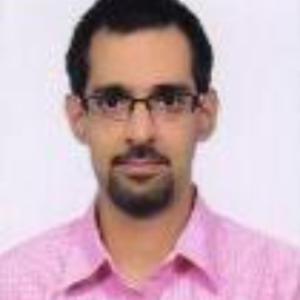Title : Mucormycosis associated with COVID-19 - A deadly combination
Abstract:
Abstract:
The outbreak of coronavirus disease (COVID-19) caused by severe acute respiratory system coronavirus 2 (SARS-CoV-2) was first reported in Wuhan, China and has quickly spread to other parts of the world in the form of a global pandemic. It has been associated with a wide range of opportunistic bacterial and fungal infections. Recently, the increasing incidence of rhino-orbito-cerebral mucormycosis (ROCM) in the setting of COVID-19 world-wide, particularly in India has become a matter of immediate concern. According to the data from the Integrated Disease Surveillance Programme (IDSP), around 46958 cases and 4666 deaths due to mucormycosis following COVID-19 have been reported in India and around 18,562 cases of mucormycosis are under treatment in the country as on July 30, 2021. The primary reason that appears to be facilitating this outbreak of mucormycosis is an ideal environment of low oxygen (hypoxia), high glucose (diabetes/ steroid induced hyperglycemia), acidic medium (metabolic acidosis/ diabetic ketoacidosis), high iron levels (increased ferritins) and decreased phagocytic activity of white blood cells (WBC) due to immunosuppression (SARS-CoV-2 mediated/ steroid mediated/ background comorbidities) coupled with several other risk factors including prolonged hospitalization with or without mechanical ventilation. It is postulated that COVID-19 associated mucormycosis (CAM) is driven by complex host-microbe interactions.
Mucormycosis, erroneously referred to as “black fungus”, is a rapidly progressive and potentially lethal, angioinvasive fungal infection caused by Mucorales species. The ubiquitous mold usually gains entry into the host through the respiratory tract. Alternatively, organisms may enter the body through cuts or burns in the skin or may become disseminated via bloodstream infection. COVID-19 associated mucormycosis may affect the lungs (pulmonary mucormycosis) but nose and sinuses are the most frequent infection sites causing symptoms such as nasal blockage and discharge, unilateral facial swelling, pain and/or redness around eyes or nose and black necrotic lesions. It can then spread to the eyes, causing blindness, or to the brain, causing headaches and seizures (rhino-orbito-cerebral mucormycosis). Diagnosis is usually made by clinical findings supported by diagnostic nasal endoscopy or contrast-enhanced MRI or CT scan coupled with microbiological confirmation on direct microscopy, culture or histopathology. Suspected mucormycosis requires urgent intervention as even a slight delay in initiation of appropriate therapy can have devastating implications on patient survival. The global guidelines of European Confederation of Medical Mycology (ECMM) and the Mycoses Study Group Education and Research Consortium (MSG ERC) strongly support an early complete surgical treatment for mucormycosis whenever possible, in addition to systemic antifungal treatment. Liposomal Amphotericin B, Amphotericin B lipid complex, and posaconazole oral suspension are considered as the first-line antifungal monotherapy, while isavuconazole is strongly supported as salvage treatment. Prognosis remains poor even with aggressive therapy with reported mortality rates of 33.3-80 per cent. Hence, it becomes extremely important in the current COVID-19 setting to optimize the indications for & dosage of systemic steroids, ensure judicious use of tocilizumab, monitor blood glucose levels & minimize the patient exposure to potential sources of infection to possibly reduce the incidence of this lethal fungal infection.



